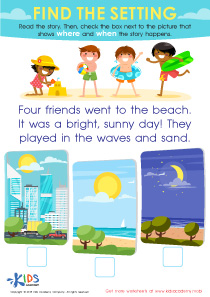Easy Lowercase/Small Letters Worksheets for Ages 5-8
3 filtered results
-
From - To
Discover our collection of easy lowercase/small letters worksheets designed specifically for children ages 5-8! These engaging worksheets provide a fun and interactive way for young learners to master the alphabet. Each worksheet focuses on different lowercase letters, incorporating activities such as tracing, matching, and coloring to enhance literacy skills. Ideal for both home and classroom use, our worksheets cater to various learning styles, fostering creativity and confidence in budding readers and writers. Dive into our resources and help your child lay a solid foundation in language skills while having fun with letters. Start their learning journey today!


Uppercase and Lowercase Letters: Assessment Worksheet


Words with Sound L Reading Worksheet


Lowercase Letters Search: Assessment Worksheet
Teaching easy lowercase or small letters to children aged 5-8 is crucial for several reasons. First and foremost, mastering lowercase letters forms the foundation for literacy skills. Recognizing and writing these letters enables children to read words more easily, as lowercase letters predominantly appear in texts.
Additionally, familiarity with lowercase letters fosters confidence in writing. Children begin to express themselves through writing at this age, and knowing how to use lowercase effectively allows for clearer communication and creativity. It also helps students understand basic grammar, as they learn when to use uppercase at the beginning of sentences or for proper nouns.
Furthermore, learning lowercase letters promotes fine motor skills. Writing involves coordinating hand-eye movements, and practicing with small letters helps refine these skills, which are essential for overall academic success.
Finally, by emphasizing lowercase letters, parents and teachers can create engaging activities that make learning fun, like games and storytelling. This positive reinforcement encourages a love for learning, paving the way for lifelong educational pursuits. In short, focusing on easy lowercase letters during these formative years supports literacy development, fosters expression, enhances motor skills, and builds a foundation for ongoing learning.
 Assign to My Students
Assign to My Students










